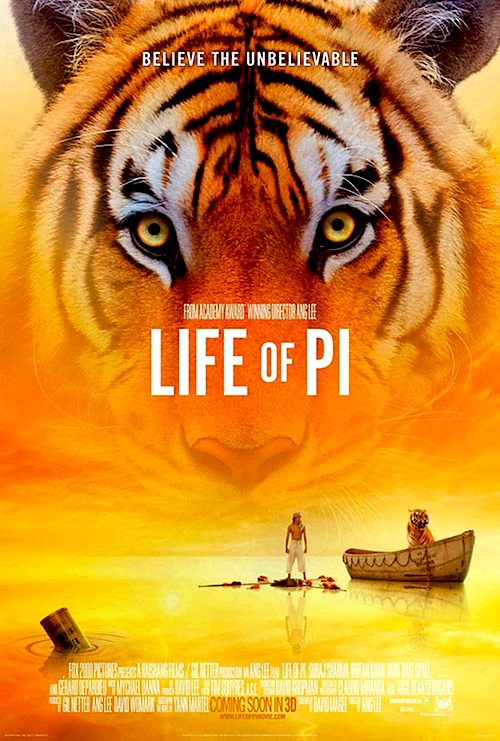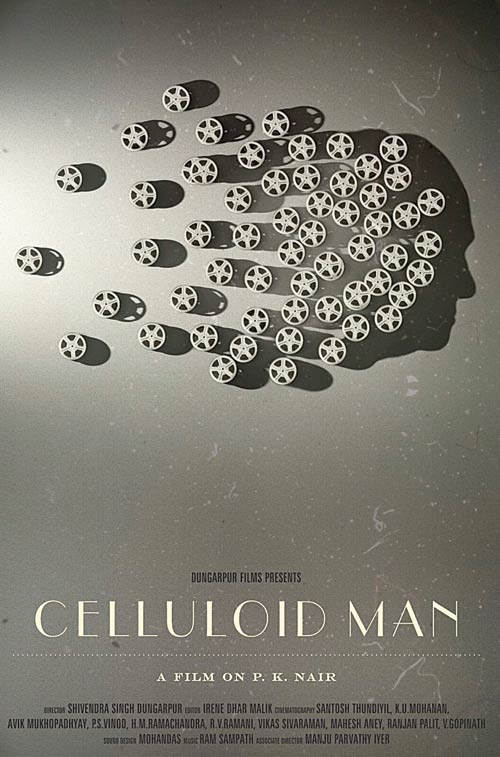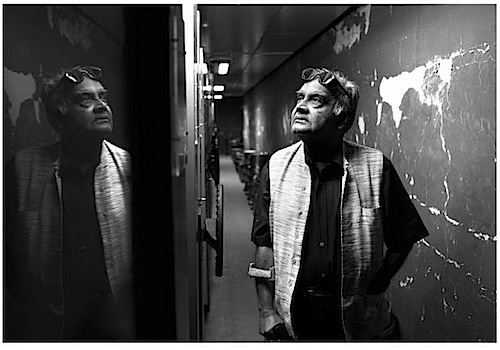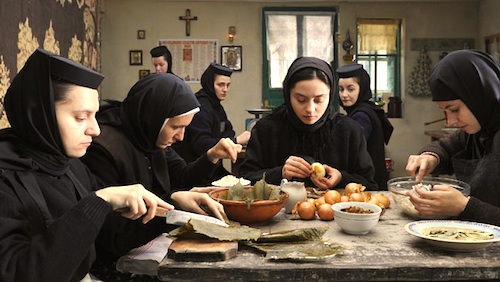By Joe Bendel. In 3D, New Age platitudes look like they are coming straight at you. At least Taiwanese auteur Ang Lee makes them stunning to behold. The tiger does not hurt, either. Generating significant buzz, Lee’s they-said-it-couldn’t-be-done adaptation of Yann Martel’s Life of Pi officially opened the 50th New York Film Festival, now underway at several Lincoln Center venues.
Growing up in India’s French quarter, Pi Patel was named for a Parisian swimming pool, but embraced mathematics as a means of truncating the embarrassing Piscine. As a boy, religion was his hobby, practicing Hinduism, Christianity, and Islam Furr’s Cafeteria style (but no love for Buddhism, evidently). He also picks up a few animal training pointers from his zookeeper father, which will stand him in good stead.
Much to Patel’s chagrin, his father decides to immigrate to Canada, where he and his brother will enjoy better future opportunities. Tragically, their ship sinks en-route – which is how, through an unlikely set of circumstances, Patel finds himself sharing a life boat with the family’s ferocious Bengal tiger, Richard Parker.
 Pi is not exactly a story of a boy and his tiger. Despite the character’s avowed spirituality, he never hopes to change the tiger’s nature. Richard Parker begins and ends the film as a wild beast. However, Patel will attempt to train him with the techniques he learned from his father, in order to survive. They will not cohabitate, though. Patel will spend most of his time in a makeshift raft lashed to the lifeboat, ceding the larger vessel to Richard Parker.
Pi is not exactly a story of a boy and his tiger. Despite the character’s avowed spirituality, he never hopes to change the tiger’s nature. Richard Parker begins and ends the film as a wild beast. However, Patel will attempt to train him with the techniques he learned from his father, in order to survive. They will not cohabitate, though. Patel will spend most of his time in a makeshift raft lashed to the lifeboat, ceding the larger vessel to Richard Parker.
For those who were wondering where Ang Lee has been, he has spent the last four years or so in a wave tank in Taiwan. Not surprisingly, the man who helmed Crouching Tiger has a keen sense of how to incorporate 3D to best serve the on-screen action. As dramatic as the tiger sequences are, it is the way he realizes depth and scope that are particularly arresting. He and his team create a spectacular fantasy world in the middle of the ocean.
Unfortunately, the narrative settles into a second act doldrums, largely repeating its Robinson Crusoe-Grizzly Adams motifs in what seems like an endless loop. Yet, in contrast to the film’s frequent heavy-handedness, Lee’s payoff hits the mark, precisely because of his tasteful understatement.
Indeed, there are many elements that work quite well in Pi, particularly its nostalgic portrayal of French India. For many viewers conditioned by Jewel in the Crown to think of pre-1949 India solely in terms of the British Raj, this is fertile ground, worth exploring in further films. Lee also nicely establishes the Patel family history, especially the role played by his dashing honorary uncle, Mamaji (played by the distinctive Elie Alouf). The wrap-around framing device is also quite effective, featuring a relatively brief but moving performance from Irffan Khan as the adult Patel, relating his story to a Martel-like novelist. For hardcore film geeks, Pi even features an unusual aspect ratio shift.
Pi has its merits, but it also illustrates the perils inherent in films confined to lifeboats. Visually, it is quite the triumph, but Lee’s young cast-members are not all some more enthusiastic critics are billing them to be. Ultimately, much of Pi is like a 3D painting—dazzling to soak in, but rather static. Better filmmaking than story-telling, Life of Pi certainly deserves technical consideration during awards season. Recommended for those interested in 3D as legitimate creative medium, Life of Pi launched this year’s NYFF on Friday, with a theatrical opening already scheduled for November 21.
LFM GRADE: B-
Posted on October 1st, 2012 at 11:56am.


